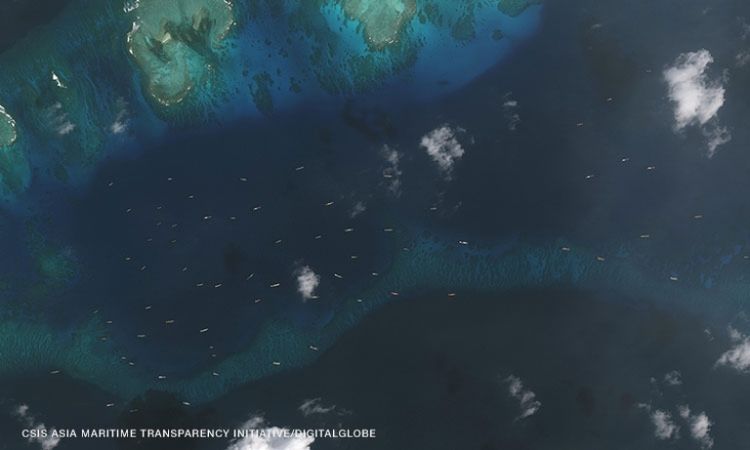Skip to content
Maritime Development and Security Chronalysis: April to June 2019
As the Philippines entered midterm election frenzy, China emerged as an important issue with the opposition using the Duterte administration’s China policy against his allies. Though this did not translate to electoral victory for the opposition, Duterte’s friendly treatment of China was further put to the test in the middle of June when a maritime incident involving Filipino and Chinese fishermen that took place within the Philippines’ exclusive economic zone captured the country’s attention.
The Busy Waters of the South China Sea
The U.S. and the Philippines began April with Balikatan 2019 military exercises, held in Zambales facing the South China Sea and a mere 90 miles away from Scarborough Shoal. This year’s scaled-up exercises included simulated amphibious assault and landing exercises, an airfield and island seizure drill, as well as live fire exercises. The transit of USS Wasp , a helicopter carrier, near Scarborough Shoal en route to the exercises caught the attention of China, with the Foreign Ministry spokesperson urging the U.S. to “not stir up trouble in the calm” of the South China Sea.
The US and its partners continued to maintain presence in the South China Sea and adjacent areas, to China’s irritation. The US Navy conducted several Freedom of Navigation operations in the South China Sea, challenging China’s excessive maritime claims and artificial islands in the Gaven and Johnson Reefsin the Spratlys, in Scarborough Shoal, and in the Paracels.
Many other exercises were also held in the South China Sea and the adjacent waters. In April, Vietnam and India held the second iteration of their bilateral naval exercises in Cam Ranh Bay, while in early May, naval vessels from Japan, U.S., India, and the Philippines sailed together and conducted week-long drills in the South China Sea as they were en route from South Korea to Singapore for the second phase of the ADMM Plus Maritime Security Field Training Exercises.
Japan has likewise been quite active in the South China Sea this quarter, holding bilateral interoperability exercises with the Royal Canadian Navy and combat training with the U.S. Navy’s Ronald Reagan strike group. At the end of June, the Japan Maritime Self Defense Force and the Japanese Coast Guard held their first joint drill in the South China Sea, off the coast of Brunei.
Australia’s third Indo-Pacific Endeavour also continued through April and May, with Australian Navy ships travelling through ports of key partners in South and Southeast Asia. The Australian Navy celebrated ANZAC Day and performed shore-to-ship operations in Port Klang, Malaysia, with similar training activities and cultural engagements happening during their stops in Thailand, Vietnam, Singapore, and Indonesia. Australian naval pilots reported being targeted by handheld lasers from passing fishing vessels during their transit in the South China Sea, and a Chinese warship shadowed the Australian vessels.
In response to the activity in the South China Sea, Chinese Minister of National Defense Gen. Wei Fenghe mentioned in his speech during the 18th Shangri-La Dialogue that “countries outside the region come to the South China Sea to flex their muscles,” intervening and destabilizing security in the area and leave a mess behind. He also admitted to China militarizing the South China Sea, calling it the right of a country to construct in its own territory. Earlier, on April 23, the People’s Liberation Army Navy celebrated its 70th anniversary with a fleet review, showing off 32 of its vessels, including its aircraft carrier, the Liaoning, and debuting its newest Type 55 destroyer, the largest and most advanced Asian destroyer to date. Read more…
PACS2019-10-02T07:56:46+00:00
Share This Story, Choose Your Platform!





